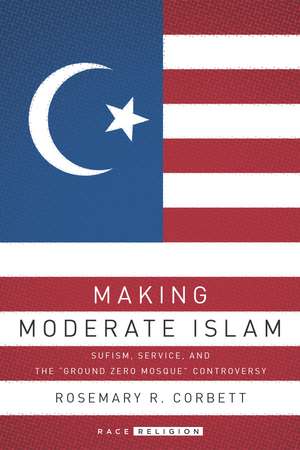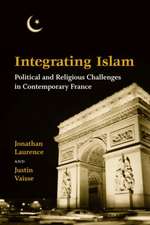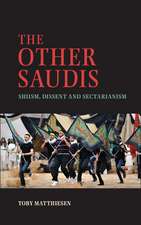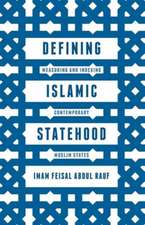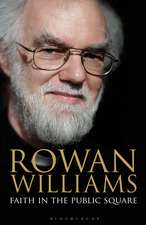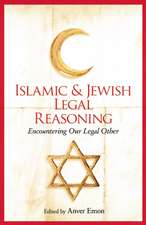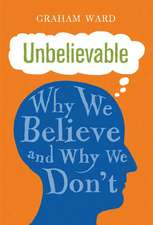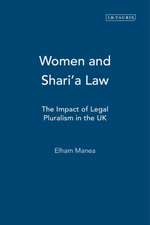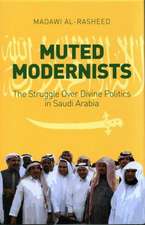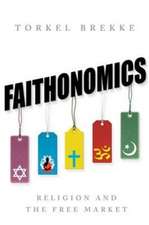Making Moderate Islam: Sufism, Service, and the "Ground Zero Mosque" Controversy: RaceReligion
Autor Rosemary Corbetten Limba Engleză Paperback – 22 noi 2016
| Toate formatele și edițiile | Preț | Express |
|---|---|---|
| Paperback (1) | 199.10 lei 3-5 săpt. | |
| Stanford University Press – 22 noi 2016 | 199.10 lei 3-5 săpt. | |
| Hardback (1) | 704.31 lei 6-8 săpt. | |
| Stanford University Press – 22 noi 2016 | 704.31 lei 6-8 săpt. |
Preț: 199.10 lei
Nou
38.10€ • 39.54$ • 31.85£
Carte disponibilă
Livrare economică 22 februarie-08 martie
Specificații
ISBN-10: 1503600815
Pagini: 304
Dimensiuni: 152 x 229 x 23 mm
Greutate: 0.45 kg
Editura: Stanford University Press
Colecția Stanford University Press
Seria RaceReligion
Recenzii
Notă biografică
Cuprins
In December 2009, Feisal Abdul Rauf announced plans to open a thirteen-story Islamic community center in Manhattan. A prominent imam, Sufi shaykh, and the internationally recognized leader of the Cordoba Initiative (founded in 2004 to "heal" the divide between "Islam and the West"), Rauf designed Cordoba House to educate Americans about the truths Islam shares with other faiths and to exemplify the "moderate Islam" he had spent nearly a decade promoting¿most notably in his 2004 book. This chapter briefly introduces Rauf's organizations and his primary message of moderation, outlining the political, economic, racial, and gendered components of his philosophy that will be further explored in the rest of the book. Additionally, it discusses how Rauf's narrative of immigrant assimilation both replicates and obscures the racialized tactics previous religious minorities and immigrants used to claim belonging in the U.S.
This chapter parses the central components of Rauf's narrative of moderate Islam in order to reveal the political, economic, and philosophical similarities between Rauf's thought and that of some of his detractors¿in particular, Newt Gingrich. These similarities, derived from Rauf's father's work with Gingrich's mentor (American Enterprise Institute neoliberal pundit, Michael Novak) during an era in which white ethnic religious minorities tried to prove their commitments to capitalism, illuminate the racialized tropes of assimilation and inevitable upward mobility many marginalized religious groups have echoed and adapted while explaining their own traditions in ways that demonstrate compatibility with American free-market capitalism and Protestant-derived secularism.
Chapter Two reveals how Feisal Abdul Rauf's father, a high-profile immigrant imam from whom Rauf derived much of his material, worked with Catholic and Jewish neoliberals in the 1970s while competing with other Muslim leaders¿particularly, black Americans¿to serve as a spokesperson for Muslims in the U.S. The chapter covers the political and economic developments that have given rise to tensions between many black American Muslims and American Muslims of Arab and South Asian ancestry. These tensions, which involve contests since the 1960s over political representation, religious authority, and economic resources, have inspired both black American and immigrant Muslims to emphasize their embrace of free-market capitalism and their participation in community service as they jockey for influence with American elites.
Locating Rauf's Sufi order within the history of Sufism in the U.S., this chapter tracks Rauf's change from a real estate agent and part-time imam into the leader of the ASMA Society, an organization devoted to promoting Sufism in America. It examines the thinkers and leaders who most influenced Rauf, charts Rauf's journey in co-founding the ASMA Society with Daisy Khan (his wife) and Faiz Khan (no relation), then illuminates how and why Rauf and Khan, like Rauf's Jerrahi shaykh decades earlier, shifted from describing their organization as Sufi in orientation to one devoted to cultural appreciation. This is a strategy (entirely sincere) that Rauf's shaykh had followed when Sufi orders where banned in Turkey, and one Rauf and Khan pursued after 9/11, once Americans began to broadly fear "political Islam."
This chapter maps the creation and evolution of Rauf's and Khan's organizations, the ASMA Society and Cordoba Initiative, discussing Rauf's and Khan's shift from describing their work as Sufi, American, and cultural in orientation to interreligious, international, and policy-oriented. In the process, it shows how Rauf's and Khan's goals and self-presentations changed as they attempted to accomplish their objectives while simultaneously meeting different non-Muslim elites' shifting demands for particular kinds of moderate spokespersons. Initially promoting cultural programs and the aesthetic beauty of Islam as a means of building bridges with other Americans, Rauf and Khan increasingly emphasized political goals as they established relationships with national and international leaders and government officials. In the meantime, they also de-emphasized Sufism, which could pose problems for Rauf's status as a Muslim legal authority in some of the countries where he spoke on behalf of the U.S. State Department.
Chapter Five describes some of the racial and ethnic assumptions underlying Rauf's cultural, sociological, and historical writings and explores how Muslims at Rauf's mosque responded to his teachings. It shows how Rauf positioned Sufism as the bridge between a multitude of differences, including those separating immigrant Muslims from black American Muslims, rich Muslims from poor, Sunni from Shi'a, and (in his words) Islam from the West. It focuses, though, on how Rauf's dervishes struggled with aspects of his definition of moderation¿particularly Rauf's insistence that Muslims overcome their own limited cultural traditions so as to align their practice of Islam with American democracy and capitalism. Examining some of the issues New York Sufis faced in trying to live this moderate Islam after 2001, I focus on the ways they adopted and altered such arguments so as to deal with the racial, economic, and political disparities they confronted.
Chapter Six examines how Muslims dealt with the gaps between Rauf's and Khan's idea of America and the gendered realities of their daily lives. Promoting women's rights was a central component of Rauf's and Khan's work during the decade after 9/11, and they made the same assertions about women's equality as they did about religious and racial equality, presenting it as a fait accompli. For many women who attended Masjid al-Farah, though, gender equality was more elusive¿not because they were Muslim, but because social gains for women in the U.S. failed to meet the hopes and promises of liberal feminists. Chapter Six also looks at how attitudes at the mosque toward women's rights activists and toward female religious leaders who were part of the community varied not just in relation to religious doctrine, but in relation to how much these women engaged in various kinds of community service.
As Rauf and Khan spent increasing amounts of time away over the years in order to pursue their ASMA and Cordoba projects, Rauf enjoined his dervishes to take up greater responsibilities of service to their Sufi order and community. As I discuss in this chapter¿which includes a larger examination of the politics, hopes, and fears animating the emphasis on community service among American Muslims since the Islamic center controversy¿some of Rauf's dervishes interpreted his instructions to serve and to model moderation in ways other than he intended, leading to disagreements over the nature of the Islamic center project, a split within Rauf's group, and to the ultimate demise of Cordoba House as Rauf envisioned it. Charting the controversy over the "Ground Zero Mosque," this chapter concludes with the state of Rauf's organizations five years later.
Examining larger Muslim American efforts to prove their patriotism through community service since 2009, the final segment of the book reminds readers of the racism built into dominant U.S. understandings of Muslim moderation and immigrant assimilation. Not only does this account reveal the painful choices that many spokespersons for Muslim Americans face and the gaps between high-minded ideals and the lived experiences of Muslims in the U.S., it also reemphasizes that marginalized groups in America have often gained provisional acceptance (though not always equality) at the expense of others. In so doing, the conclusion to Making Moderate Islam both exposes the power dynamics Muslim Americans are caught in at the beginning of the twenty-first century, as well as calls into question the larger limits of liberal inclusion for religious and racial minorities in the United States and the longer histories of provisional tolerance that have masqueraded as "acceptance."
